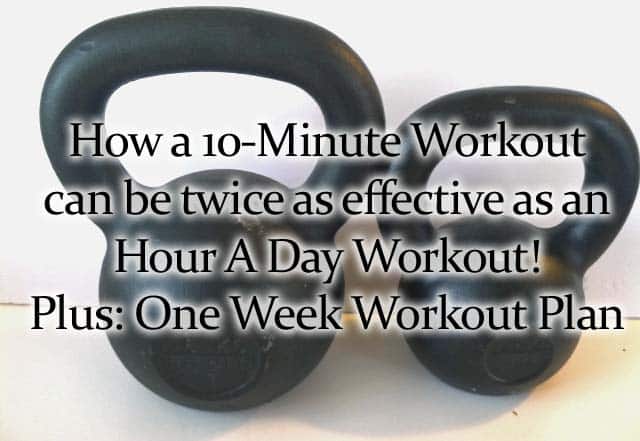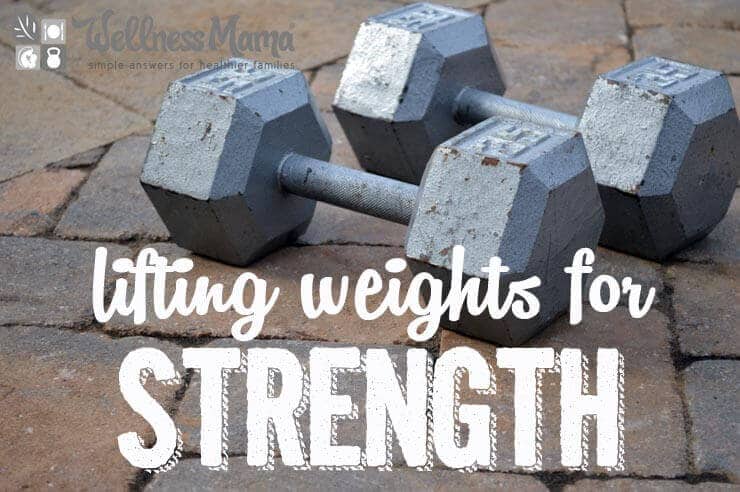Many women shy away from lifting weights, and especially heavy weights, because of fears of getting too bulky or putting on too much muscle. Thanks to a couple of hormones (estrogen and progesterone) and lack of another (testosterone), this is almost impossible without some artificial hormone help, and lifting heavy weights can provide women with not only a well-toned physique, but many health benefits as well.
In fact, there has been a surge in popularity of women’s weightlifting groups online, where women follow a very specific dietary and weight lifting protocol and manage to lose size (not necessarily weight), get much stronger and improve overall health as well. From a strictly practical perspective, strengthening core muscles that are used for common movements also helps make everyday life easier. The ability to lift heavier loads off the ground makes it easier to move furniture, lift boxes and do other household work. The ability to pull up one’s body weight makes it easier to climb and is a helpful survival skill.
If you’ve ever thought of working toward improving strength instead of just losing weight (though you’ll probably lose size in the process!), this is the common protocol:
The Basics
- Fasting 10-12 hours a day– Easier than it seems. This should only be done if a person has functioning and healthy thyroid and adrenals. Consider this, you likely already fast for at least 8-9 hours a day (during sleep), so adding a couple more doesn’t actually seem like such a big difference. For optimal benefit, a high protein breakfast is consumed (around 7-8 am) and dinner is eaten before 6 or 7 pm to extend the fasting window. The biggest meal is typically consumed after working out, and protein consumption is a focus.
- Monday: Deadlifts (3 sets of 5 reps) increasing weight approximately 2% per session (starting @125), chin-ups (as possible working up to 2 sets of eight)
- Wednesday: Pushups, 2-3 sets of 5-7, and pull-ups (as possible work up to 2-3 sets of 5-7),
- Friday: 2-3 sets of 7 squats, 2-3 sets of 7 lunges, 2-3 sets of overhead press (work up to handstand push ups).
- In between, I’ll just do some kettlebells, hiking, and fun activity but no real “cardio.” I’m also adding some gelatin for protein and joint strength.
Not sure about the fasting? This article is one of the best I’ve seen of explaining the benefits of fasting and how even daily fasting doesn’t cause muscle loss, lowered metabolism, etc. (Warning, he often uses language that many find offensive).
My Experience:
I personally tried this program for three months to see if it was effective at increasing strength and losing size. After looking at the results, I would consider it a success!
Deadlift
- Start: 115 pounds
- Finish: 205 pounds
*As a note: I wasn’t pushing my absolute max before this experiment, and I could have probably lifted about 150 at that point, so it was a strength gain of about 55 lbs over those few months, rather than 90 lbs.
Chinups
- Start: None
- Several in a set, though still not up to 7 in a consecutive set, but fill in with negatives when I reach failure.
Pullups: Same as Chinups
Pushups
- Start: Several sets of 7 without trouble
- Finish: to test my max, I did 10 sets of 7 without trouble and can also do 20-30 in a row without a problem (full pushups). Can also do one handstand push up, but my balance gets me before my muscles do on this one… maybe I should do ballet for my next experiment to work on that 🙂
Kettlebells
- Start: I would do tabata “sprints” with swings, or do 30 seconds on, 30 seconds rest for 5-10 minutes
- Finish: Can do 75-150 swings consecutively and to test strength, I did 1,000 swings in an hour.
Other notes: I ate a lot of protein during this experiment, more because I naturally just wanted more protein than as an effort to increase protein. I also took Magnesium, Gelatin, Vitamin D, and my normal supplements and didn’t have any trouble with joints or being overly sore, even with increasing the weights a lot. This is not an experiment that I would attempt while pregnant or even nursing, as it does push the body and fasting is not recommended during these times. I would also personally not attempt a program like this without first making sure that my leptin levels were in proper ranges and that I didn’t have a cortisol imbalance, as fasting can make both of these problems worse.

Reverse Pyramid Training
Reverse Pyramid Training, or RPT, is considered by many, including myself, to be one of the most effective training methods for putting on muscle and/or strength with the least amount of time invested. When training for strength, you need to limit volume due to the high intensity of the sets. Since you are typically working with 70-90% of your 1RM (1 Rep Max, the maximum amount of weight you could lift a single time), each set is very taxing on your central nervous system. For this reason, low rep RPT is usually limited to one or two main exercises per workout, with the other exercises performed in a less intense fashion. Furthermore, a de-load week, a week where you reduce the weight to approximately 80% of normal so that the body has some extra time to recover, is usually done every 4th week (i.e. push the weights for three weeks, then spend a week taking it easy). To help illustrate a RPT strength workout, below is a sample back workout.
The workout is started with everyone’s favorite exercise, deadlifts, done in a RPT fashion. You’ll do 2 sets, with 4-6 reps per set. For the first set, go all out, BUT do not go to failure. You should rarely, if ever, go to failure due to the risk of burning yourself out as well as regressing in strength. Once you finish your first set, drop the weight enough to be able to do an extra rep (i.e. if you did 4 reps, decrease the weight enough that you can do 5 reps, usually about 10%). Rest approximately three to five minutes, and then do another set stopping before failure. You should be out of breath after each set, especially with deadlifts. Rest five minutes, then move onto weighted chins. Again the rep range will be 4-6; however, this time you’re doing three sets. Just like deadlifts, the first set will be max effort, stopping just before failure. Weight will be dropped by about 10% between each set, and the rest interval is three minutes with a five minute break after completing the exercise and moving onto bent-over barbell rows. For this exercise, the Starting Strength method will be employed, in which you take your 7RM weight (the amount of weight you could lift 7 times before failure) and attempt to do three sets of five (always stop before failure). Once you are able to achieve five reps for all three sets, you increase the weight by 2.5%.
Progression of exercises done in RPT fashion should be done as follows: once you reach the upper end of a rep range, increase the weight by 5% and work back up. The individual sets should be progressed independently. For example, if you can easily get six reps on your second set of deadlift, then increase the weight for the second set on the next workout by 2.5-5%.
The split I have found to work the best is pull, push, legs done on either Monday, Wednesday, Friday or Tuesday, Thursday, Saturday (you need a day of rest between each workout and at least two days between the pull and leg workouts due to deadlift). The only exercises done in RPT fashion (with max effort on the first set) are the big compound lifts: deadlift, weighted chins, bench press, and squats. The exercises that are not designated RPT or SS should be completed with about 2 reps short of failure. The following routine proved to be very effective during my last cut, enabling me to retain if not improve strength while on a caloric deficit.
Sample Workout
Monday: – Pull
Deadlift – 2 x 4-6 (RPT)
Weighted Chins – 3 x 4-6 (RPT)
Bent Over Barbell Rows – 3 x 5 (SS)
Preacher Curls – 2 x 8-10 (Optional)
Wednesday: – Push
Bench Press – 3 x 4-6 (RPT)
Standing Press – 3 x 5 (SS)
Incline Dumbbell Press – 2 x 6-8
Weighted Dips or Scull Crushers – 2 x 8-10 (Optional, but highly encouraged)
Friday: – Legs
Squat – 3x 6-8 (RPT)
Leg Curl – 3 x 5 (SS)
Lunge – 2 x 8 (per leg)
Standing Calf Raise – 3 x 8
If you have serious issues with one of the exercises listed above, there are suitable substitutions (i.e. leg press if squats hurt your lower back or incline barbell bench press for incline dumbbell bench press, etc.). DO NOT, however, start adding exercises. If you are doing RPT correctly, then this is more than enough volume. By the time you finish the workout you should be tired and ready to feast on your post workout (PWO) meal, rich in protein, fat, AND Carbs.
Conclusion:
I really liked this experiment. It was very challenging to keep adding more weight to my lifts each week, but I was able to add more to each lift than I expected. I did no cardio during this time, other than hiking or playing with the kids, and my clothes got looser and I noticed much more muscle definition in my legs and back especially.
Lifting actually required much more effort than I expected, since I was doing only a few sets with high weights. I would crave protein right after lifting, and since I was lifting in a fasted state, I think I noticed faster results. After a workout, I could easily eat 4-5 eggs and a big salad. I was surprised to see the visible changes in my muscle tone, and I slept really well on lifting days (another unexpected affect).
I really enjoyed how little time this experiment took each week and how easy it was to stick to. I think this is something that I could definitely commit to long term and plan to keep up with the training schedule.
What is your workout plan for the next few months? What’s your favorite at-home exercise? Share below!




Leave a Reply